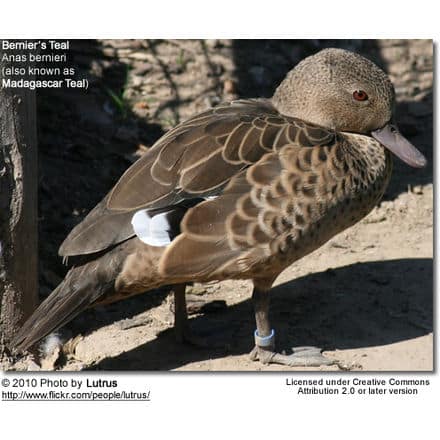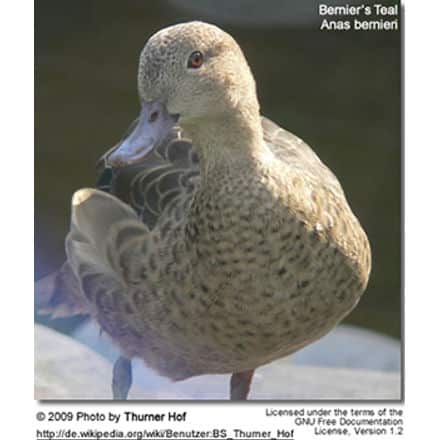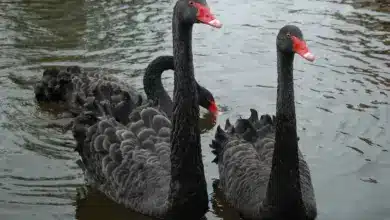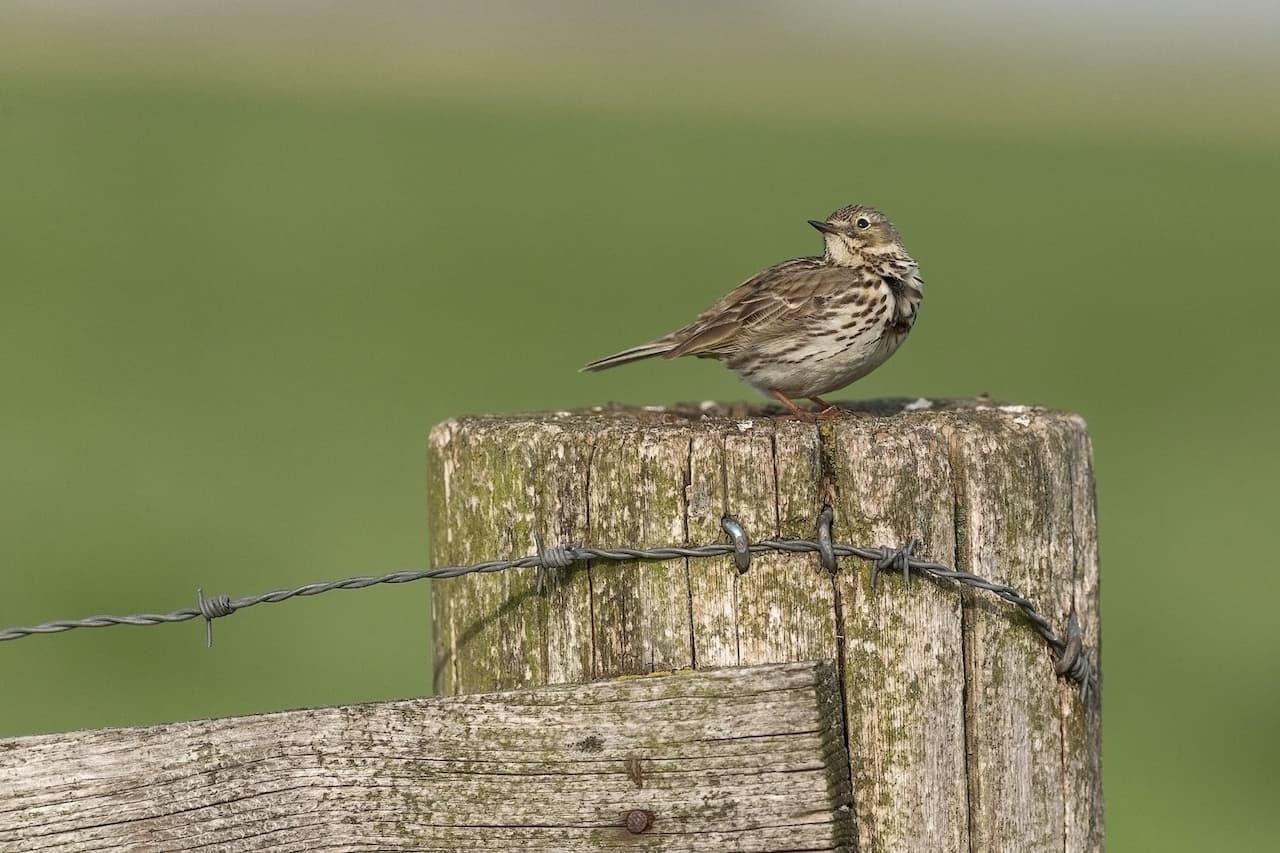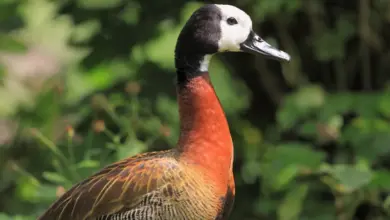Bernier’s Teals or Madagascar Teals
Bernier’s Teals (Anas bernieri) – also commonly known as Madagascar Teals – are ducks found only along the west coast of the island of Madagascar.
Their numbers have been declining and their continued existence is threatened because of trapping, shooting, and destruction of their forest habitats.
They favor mangroves and open shallow ponds and lakes, preferably brackish.
Description
Bernier’s Teals measure 40 to 45 cm in length. The plumage is mostly warm brown with conspicuous black scalloping to the feathers, which is heaviest on the flanks and chest.
They have a reast. It has a black speculum (wing patch), and the slightly upturned bill is pinkish grey.
Diet / Feeding
Most of their diet consists invertabrates, such as insects and spiders.
Nesting / Breeding
Bernier’s Teals moslty nest in tree (mangrove) cavities.
Relevant Resources
Diet / Feeding:
Teals usually feed by dabbling, grazing, or upending (= feeding upside down, with the head submerged in the water and the tail being raised in the air). It may submerge its head and on occasion even dive to reach food. In the breeding season, it eats mainly aquatic invertebrates, such as crustaceans, insects and their larvae, mollusks, and worms. In winter, it shifts to a largely granivorous diet, feeding on seeds of aquatic plants and grasses, including sedges and grains. Diurnal throughout the breeding season, in winter they are often crepuscular or even nocturnal feeders.
Ducks generally feed on larvae and pupae often found under rocks, as well as aquatic animals, plant material, seeds, small fish, snails, and crabs.
Feeding Ducks …
We all enjoy ducks and many of us offer them food to encourage them to come over and stay around – and it works! Who doesn’t like an easy meal?
However, the foods that we traditionally feed them at local ponds are utterly unsuitable for them and are likely to cause health problems down the road. Also, there may be local laws against feeding this species of bird – so it’s best to check on that rather than facing consequences at a later stage.
- Foods that can be fed to Ducks, Geese, and Swans to survive cold winters and remain healthy when food is scarce in their environment.
Please note that feeding ducks and geese makes them dependent on humans for food, which can result in starvation and possibly death when those feedings stop. If you decide to feed them, please limit the quantity to make sure that they maintain their natural ability to forage for food themselves – providing, of course, that natural food sources are available.
Species Research by Sibylle Johnson
Please Note: The articles or images on this page are the sole property of the authors or photographers. Please contact them directly with respect to any copyright or licensing questions. Thank you.

